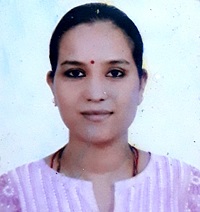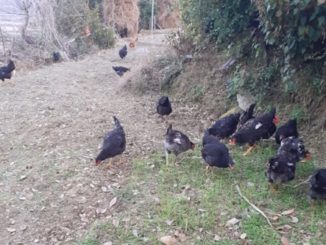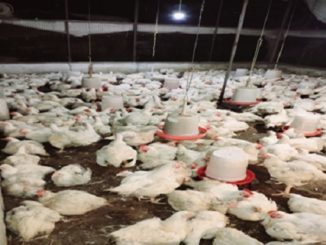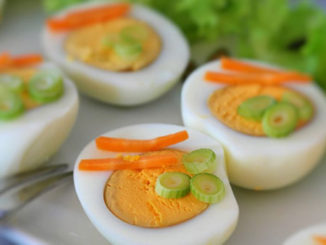Winter season has incredible impact on poultry generation by bringing down the temperature of encompassing. During winter when temperature goes down and different issues like decrease in egg generation, lessening in water consumption, diminishment in fruitfulness and hatchability and so forth happens. Consequently, the administration of poultry amid winter is an essential sympathy toward poultry agriculturist. With drop in mercury level and change in weather, poultry farmers may have to face some challenges of low environmental temperature, poor ventilation and decreased photoperiod; these seasonal fluctuations may directly or indirectly influence the egg and meat production. Therefore, farmer must be ready to take on these challenges by adopting some winter stress alleviating practices to overcome economic losses.
In winters when temperature goes down below 55o F, various problems like reduction in weight gain and egg production, reduction in water intake, reduction in fertility and hatchability, enhanced mortality, etc. occurs. Hence managing poultry in winters is very important concern for poultry farmers. Winter season has great effect on poultry production by lowering the temperature of surrounding. The infrastructure of the poultry sheds particularly in rural India is not up to the mark due to lack of electricity availability, Therefore, the management of poultry during winter is an important concern for poultry farmer. The ideal temperature for optimum poultry production is 65-75oF. Birds like mammals are homoeothermic which means they can maintain a relatively constant deep body temperature 41.7oC
Following points should be considered to get better production from poultry during winter season.
Poultry house orientation:
The poultry house should be designed in such a way to provide all the comfort required by birds during winter. Orientation of a building with respect to wind and sun consequently influence temperature, and light on different external surfaces. In winter the arc of the sun’s visible path is shortened, an east west alignment of a rectangular house provides a maximum gain of solar energy in winter. House should be designed in a way that maximum sun light enters the shed during day time. Birds should be protected from chilled winds, for this gunny bags should be hanged at the places from where the cold air enters. These gunny bags should be hanged down as soon as sunlight goes in the evening till the arrival of sunlight next morning. Ensure pest and rodent control in the poultry shed as they also seek warmer places for dwelling and poultry shed is most favorable place for them to reside.
Ventilation
During winter season it is necessary to keep the hose draft free but with plenty of ventilation. Birds release a lot of moisture in their breath and droppings which adversely affects their health, if there is restricted ventilation it causes ammonia build up in the air which causes respiratory problems. So, they need plenty of fresh air circulating around the house. For the purpose sliding windows are useful as they can be opened during day and closed during night. There should also be arrangement of exhaust fans to remove impure air.
Litter Management
The surface of floor should be covered with bedding prior to chick being placed in house material called litter. It gives comfort to the birds. A good quality litter serves as an insulator in maintaining uniform temperature, also absorbs moisture and promotes drying. It dilutes faecal material thus reducing contact between birds and manure. It also insulates the chicks from the cooling effects of the ground and provides protection cushion between bird and floor. Around 6 inches of litter is needed in houses during winter. The litter gives warmth to the birds during winter.
Feed Management
As low temperature causes more feed intake and higher oxygen demand, provide adlib feed to the birds for rapid weight gain and egg production. To avoid wastage of feed by excess intake of the birds, provide fat rich diet to the birds in winters. In winter number of feeders should be increased as compared to summer.
Poultry uses food for two main purposes i.e., as an energy source to maintain body temperature and to carry on normal physiological activities and as building material for development of bones, flesh, feather, egg etc. Therefore, adequate, balanced and healthy feed should be provided to the birds. Low temperature causes more feed intake and higher oxygen demand. Therefore, when the weather gets colder, it is essential to give the chicken plenty of food as they require extra energy for maintaining body temperature. Consumption of calories of ME/bird/day varies as the ambient temperature changes. When bird eat more feed, along with energy, other nutrients are also consumed more which are actually not needed and they become a waste. To avoid wastage during winter energy rich sources like oil/fat should be added to the diet or level of other nutrients may be reduced keeping the energy at same level. In winter number of feeders should be increased as compared to summer. For proper growth of broiler during summer, diet containing 23% protein and 3100 Kcal ME/kg diet is needed. While in winter 3400 Kcal/kg ME and 23% protein is needed.
Water Management
During winter season bird’s water consumption decreases, so far maintenance of water in the body, it is necessary to give continuous supply of fresh water which can be taken by the bird. Water must be fresh and clean. Lukewarm water should be given during winter.
Most of vaccines/ medicine/ anti stress vitamins are given to poultry through water. As water consumption of bird is reduced during winter season. Therefore, care should be taken that waterers are removed few hours prior to water medication and medicine/vaccine is given in less amount of water so that birds can consume total water and each bird get benefit of medicine/vaccine or other supplements.
Brooding Management during winter
Adjust the brooder stoves 24 hours before the arrival of chicks. Ensure that all are working properly. Adjust the temperature to 95°F at the edge of the brooder 2 inches (5cm) above the litter. Lower the temperature by 5°F each week until it reaches 70°F.
Proper care should be taken during winter so to maintain bird’s body temperature and to increase their production. The standard procedures for treatment of illness include quarantining the bird and using a broad-spectrum antibiotic in feed or water, depending on which type of antibiotic. Take care of the vaccination status of the bird and carry out necessary vaccinations, when required.







Be the first to comment